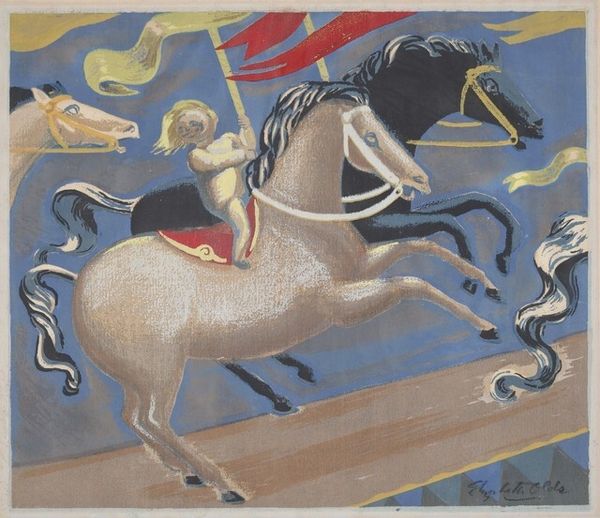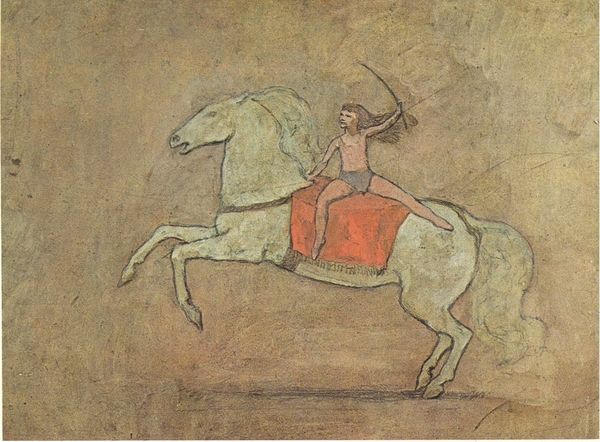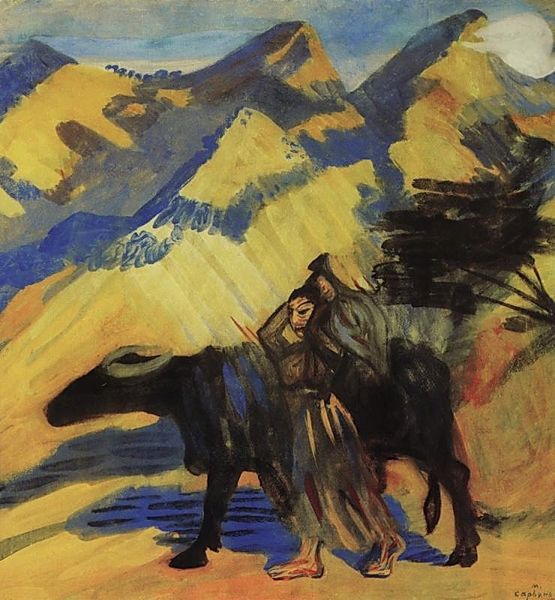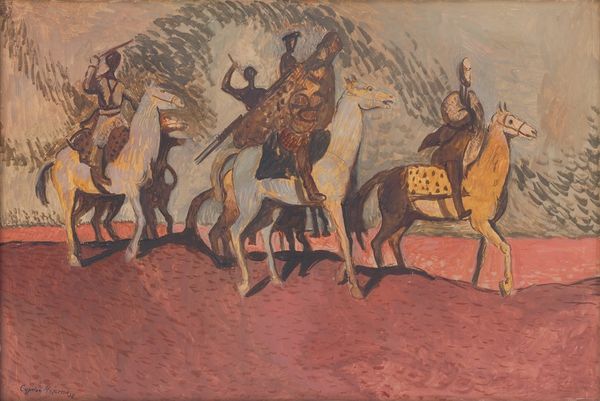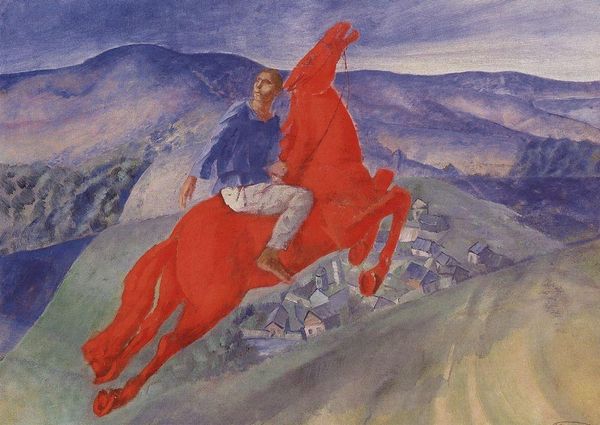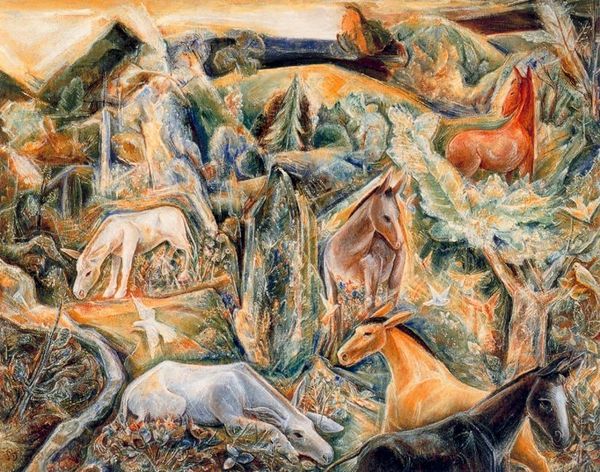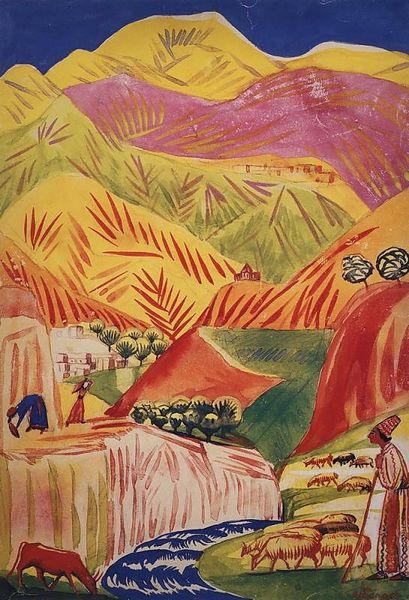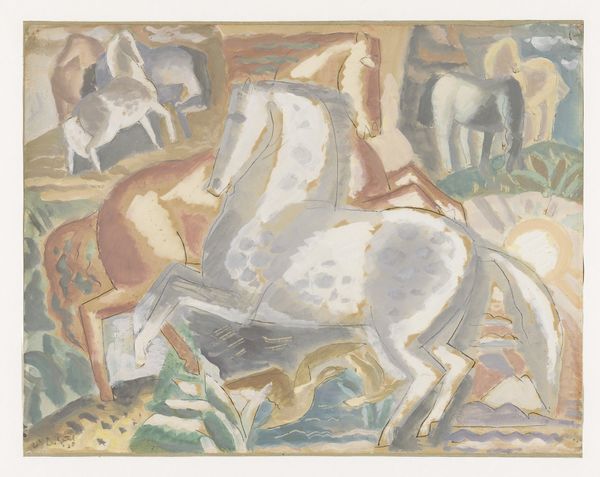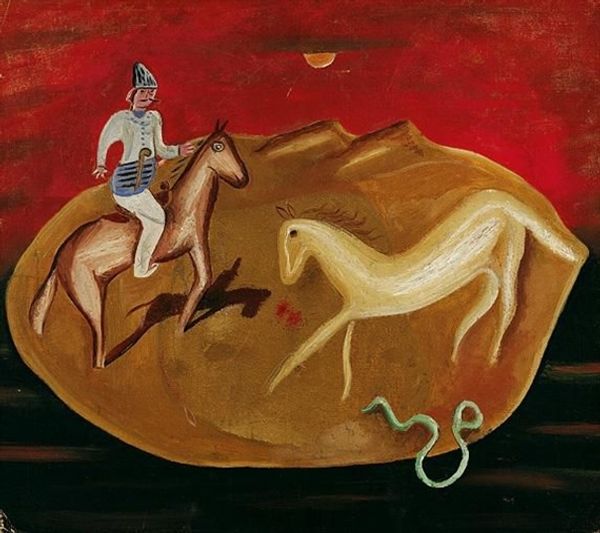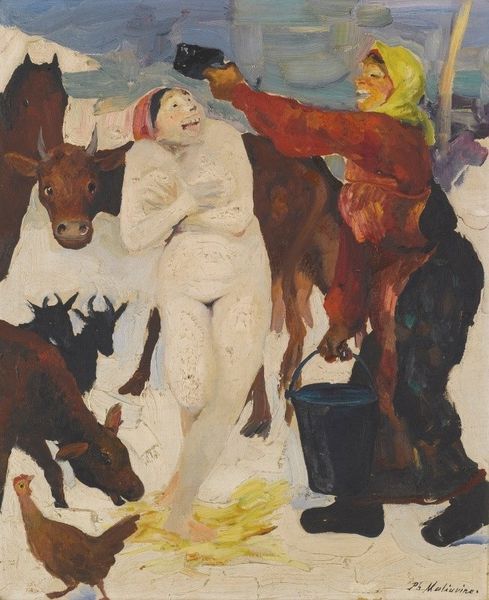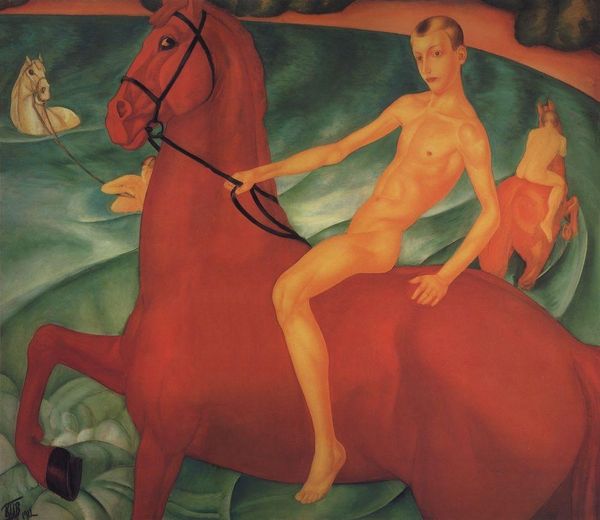
painting, watercolor
#
portrait
#
painting
#
impressionism
#
asian-art
#
landscape
#
figuration
#
oil painting
#
watercolor
#
watercolor
Copyright: Public domain
Curator: Welcome. Here we have Fujishima Takeji’s "Chinese-style Triptych", a mixed media work with both oil painting and watercolor. Editor: Well, immediately the tripartite composition is compelling. Each panel resonates with a distinct yet harmonious color palette. A sense of subdued grandeur permeates the work, despite its seemingly diminutive scale. Curator: Indeed. It's fascinating how Fujishima merges figuration with landscape across the three panels. On the left, two figures in flowing dresses stand before an ambiguous mountainscape. The center depicts a woman on horseback, with an even larger mountain behind her. And finally, to the right, a lone figure is also near a mountain setting. Editor: The materiality, too, warrants careful consideration. The oil paint provides a tangible depth to the mountainous backgrounds. In contrast, the watercolor lends a certain fluidity to the figures, almost dissolving into the environment. This creates a curious tension. Curator: And contextually, remember this artist engaged with a broad swathe of subject matter from portraits and still lifes to landscapes in his career. As an early pioneer in the formation of Japanese modern art in the Meiji period and beyond, there is a definite influence of his Western art training balanced with an embrace of Asian art aesthetics in this work. Editor: The subject depicted on horseback is striking. It recalls certain heroic female figures in both European and Asian art, though with an unmistakably contemporary, or at least modern sensibility. There is almost a romantic allure that exudes from it, and which carries through the artwork, almost binding it into a whole despite the partition. Curator: Right. One must remember the art scene context in the late 19th and early 20th century wherein Japonisme flourished. The orientalism in the figure depicted here may certainly lend the image particular symbolism, which also raises the issue of the reception by local Japanese viewers in his time. Editor: These reflections on cultural synthesis and representation complicate the otherwise pleasant initial viewing experience. I'm drawn to the ways it speaks to dialogues on global artistic exchange. Curator: Precisely. And what may initially appear as simply visually appealing quickly opens into broader considerations of culture and aesthetics. Editor: The tensions certainly enhance its resonance, a lasting engagement of historical themes with enduring visual considerations.
Comments
No comments
Be the first to comment and join the conversation on the ultimate creative platform.
